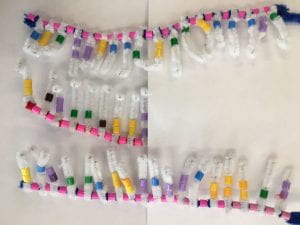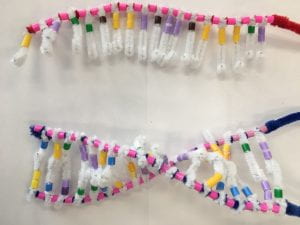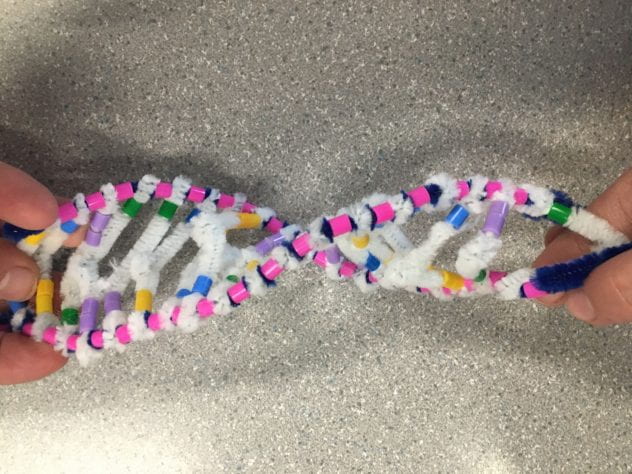Protein Synthesis is the process in which cells make proteins, with the help of RNA, DNA and amino acids. It happens through stages which are: transcription and translation.
Transcription: process by which the building instructions spelled out by DNA is transferred to mRNA
Translation: process by which the code carried by mRNA is converted into a polypeptide
How is mRNA different than DNA?
- DNA contains deoxyribose, while mRNA contains ribose
- DNA is double stranded, mRNA is single stranded
- They have different functions: DNA is responsible for storing and transferring genetic information, and mRNA acts like a messenger between DNA and ribosomes to make proteins
- base pairing is different: DNA’s bases are thymine, cytosine, adenine and guanine while mRNA’s bases are uracil, cytosine, adenine, and guanine
- DNA is longer/bigger than mRNA: DNA has 85 million nucleotide pairs, whereas mRNA has only around 1000 nucleotide pairs
Describe the process of transcription:
- Unwinding and unzipping of DNA
- the DNA molecule unwinds until it is the shape of a flat ladder
- DNA helicase starts to break h-bonds between complementary base pairings within DNA molecule

- Complementary base pairings:
- one strand of the DNA molecule is used as a template to produce a mRNA strand
- RNA polymerase is responsible for h-bonding existing RNA nucleotides to the template DNA strand and joining the adjacent nucleotides

- Separation from DNA
- once the entire gene has been transcribed onto the mRNA strand, this strand will separate from the DNA strand and transport itself out of the nucleus to deliver DNA’s message

How does this activity do a good job of modelling the process of RNA transcription? In what ways was our model inaccurate?
- This model was able to show us the basic process of RNA transcription, step by step
- It showed us how RNA and DNA:
- have unique bases (uracil and thymine), by having different coloured beads
- have a different number of backbones: RNA had one pipe cleaner as the backbone, whereas DNA had two
- completely replicated each other’s complementary base pairings, showing how transcription works
- It was slightly inaccurate because
- the model didn’t show the differing sizes between the DNA molecule and RNA molecule, as we used the same sized pipe cleaners
- we couldn’t quite see the exact process that the enzymes go through when producing certain stages
- the model didn’t show the existing nucleotides only attaching to the complementary bases before the backbone being bonded together on the RNA strand
Describe the process of translation: initiation, elongation, and termination:
- Initiation
- mRNA is held by a ribosome with a “P” site and a “A” site
- once the “P” site reads a START codon (AUG), the matching tRNA will bring in a corresponding amino acid to the start


- Elongation
- the initiation process continues, as the amino acid chain grows with every new codon being read
- the “A” site will read the next mRNA codon and bring in the next corresponding matching tRNA
- the amino acid changes from the tRNA in the “P” site will be transferred to the tRNA in the “A’ site



- Termination
- once the codon reads as the STOP codon, as there is no tRNA for a STOP codon, the amino acid change will stop growing
- the ribosome will let go of the mRNA and the tRNA will let go of the polypeptide

How does today’s activity do a good job of modelling the process of translation? In what ways was our model inaccurate?
- It was able to show us:
- how the translation process is dependant on mRNA codons (Start and stop)
- the ribosome can accommodate two tRNA’s at once
- amino acids attach and become a long chain to form a polypeptide
- It was inaccurate in showing:
- the reality of the ribosome having two sites (our model showed the ribosome as one unit)
- how translation will happen at multiple places along a mRNA strand, ours only shown it happening at one location





